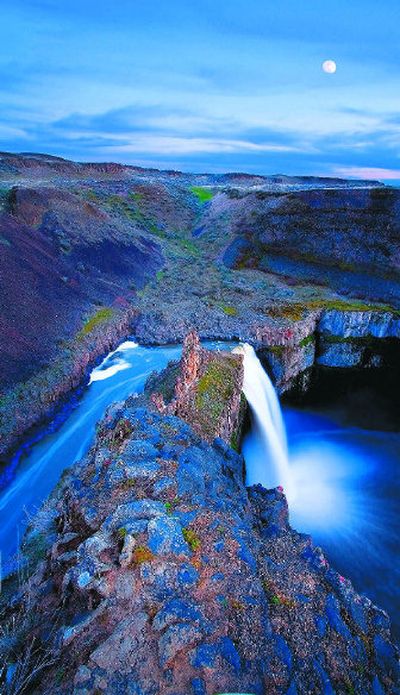Best shot

Nathaniel Morse had to visit Palouse Falls several times before he saw the light. It helped that he wasn’t in a rush last spring to drive back from the Washtucna area to his home in Nine Mile Falls. Even on his third time to the falls, he scoped out at the isolated Washington State Park until early evening before he saw the opportunity to snap the grand-prize-winning photo in the 2006 Northwest Exposure photo contest sponsored by the Washington Trails Association.
The 198-foot falls have been photographed from every angle over the years, yet Morse was able to make the relic of the Ice Age Floods stand out in the crowd of entries.
Morse, 42, is a steam plant operator and the only amateur photographer from east of the Cascades to place among the winners in the various contest categories.
“I took some normal pictures from the regular overlook area, then I spent time walking around the rim and saw this composition as I walked down an outcropping,” he said. “I liked the angle.”
“The previous year I took some pictures, but they were nothing special.”
“This time, it was toward sunset when I made the images. The light’s always better early and late in the day. Some clouds moved in, adding to the photo.
“With lower light and shooting at a small aperture (for maximum depth of field), I made the long exposure of the falls. Catching the motion and movement of water is one of my favorite things.”
However, the final product, “Palouse Falls Spire,” is two exposures blended together, he said. “Both shots were f22, one was 2.5 seconds and one was 10 seconds.
“I use a Canon EOS 5D Digital SLR with a Canon 17-40L lens and a Cokin Z-Pro filter holder with Cokin Z164 circular polarizer and various neutral density gradient filters for the majority of my landscape photography.”
Morse, who’s been shooting a digital camera for five years, said he’s always loved the outdoors and photography, two interests that make a great pair.
“Landscape photography is my passion,” he said. “I can’t afford the lenses you need for wildlife photography, but maybe later down the road.”